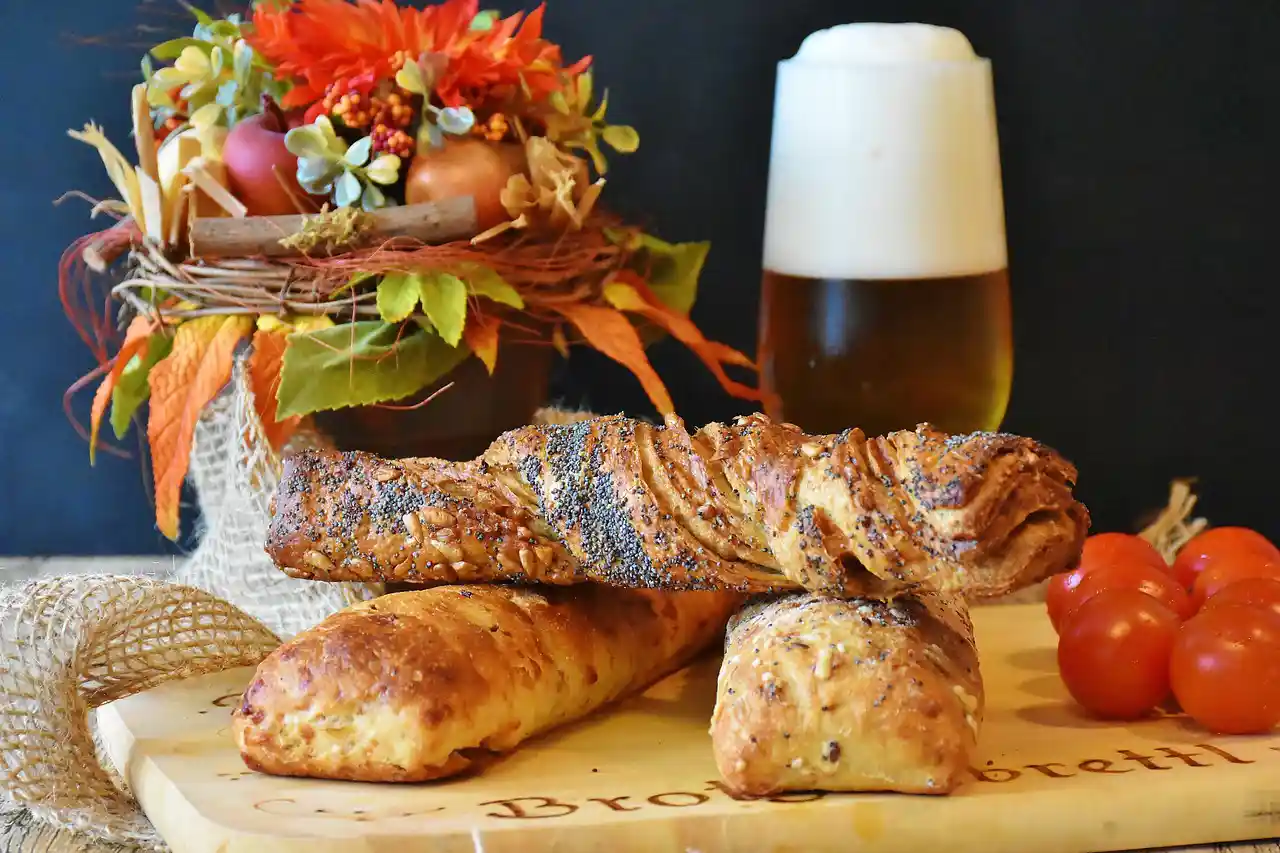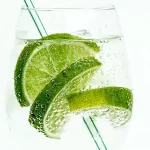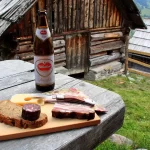If you are a beer lover, you know that pairing the right beer with the right food can elevate the entire dining experience. But with so many different types of beer and food, it can be overwhelming to know where to start. That’s why we have created this ultimate guide to beer and food pairing, to help you navigate the complex world of taste and flavor. In this guide, we will cover everything from the basics of beer and food pairing to advanced techniques that will take your pairing game to the next level.
1. Understanding the Basics of Beer and Food Pairing
Beer and food pairing is the art of matching the right beer with the right food to enhance the flavors of both. The goal is to create a harmonious balance between the beer and the food, so that neither one overpowers the other. The key to successful beer and food pairing is to understand the basic principles that govern taste and flavor.
2. Matching Intensity: A Fundamental Principle
One of the fundamental principles of beer and food pairing is matching intensity. The intensity of a beer refers to its flavor profile, which can range from light and crisp to bold and complex. Similarly, the intensity of a food refers to its taste profile, which can range from delicate and subtle to rich and robust. The general rule of thumb is to pair light beers with light foods, and bold beers with bold foods. For example, a light lager would pair well with a salad or seafood, while a strong stout would pair well with a hearty stew or chocolate dessert.
3. Pairing Beer with Different Types of Food
While matching intensity is a good starting point, there are many other factors to consider when pairing beer with different types of food. Here are some general guidelines for pairing beer with meat, seafood, cheese, and dessert.
3.1 Pairing Beer with Meat
When pairing beer with meat, the key is to match the intensity and flavor of the beer with the intensity and flavor of the meat. For example, a light lager would pair well with grilled chicken or pork, while a dark porter or stout would pair well with a rich beef stew or roasted lamb. Spicy dishes can be balanced with a hoppy IPA or a refreshing wheat beer.
3.2 Pairing Beer with Seafood
Seafood is a versatile food that can pair well with a variety of beers, depending on the preparation and seasoning. Light lagers and pilsners work well with delicate seafood like shrimp or crab, while a Belgian witbier can complement the rich flavors of a seafood chowder or bisque.
3.3 Pairing Beer with Cheese
Cheese and beer are a natural pairing, as they both have complex flavor profiles that can complement each other. When pairing beer with cheese, consider the intensity and flavor of the cheese, as well as the intensity and flavor of the beer. For example, a light lager or wheat beer would pair well with a mild cheese like brie or goat cheese, while a bold IPA or stout would pair well with a sharp cheddar or gouda.
3.4 Pairing Beer with Dessert
Desserts can be challenging to pair with beer, as they tend to be sweet and rich. However, there are many beers that can complement the flavors of a dessert without overwhelming them. For example, a Belgian quad or barleywine would pair well with a chocolate cake or brownie, while a fruit beer or sour ale would complement a fruit tart or cheesecake.
4. Advanced Techniques for Beer and Food Pairing
Once you have a basic understanding of matching intensity and pairing beer with different types of food, you can explore more advanced techniques for beer and food pairing. Here are some techniques to consider.
4.1 Balancing Acidity and Sweetness
Acidity and sweetness are two important flavor components that can have a big impact on how beer and food pair together. Balancing the acidity and sweetness of a beer with the acidity and sweetness of a food can create a harmonious balance that enhances both. For example, a sour beer can balance the sweetness of a glazed ham or a fruit tart, while a sweet beer can complement the spiciness of a curry dish.
4.2 Enhancing Flavors with Herbs and Spices
Herbs and spices can add complexity and depth to both beer and food, and can create interesting flavor combinations when paired together. For example, a saison or farmhouse ale can complement the herbaceous flavors of a roasted chicken or grilled vegetables, while a pumpkin ale can enhance the spicy flavors of a pumpkin pie or sweet potato dish.
4.3 Experimenting with Texture and Mouthfeel
Texture and mouthfeel are two important elements to consider when pairing beer and food. The carbonation and body of a beer can interact with the texture and mouthfeel of a food in interesting ways. For example, a creamy stout can complement the smooth texture of a chocolate mousse or cheesecake, while a crisp pilsner can contrast with the crunchy texture of fried food or chips.
5. Serving and Drinking Beer with Food
In addition to pairing beer with food, it’s important to consider how to serve and drink beer with food. Here are some tips to keep in mind.
5.1 Choosing the Right Glassware
The right glassware can enhance the aroma, flavor, and appearance of beer. Choose a glass that is appropriate for the style of beer you are serving, and make sure to pour the beer properly to maximize head retention and carbonation.
5.2 Temperature and Storage
Temperature and storage can also have a big impact on the flavor and aroma of beer. Make sure to store beer properly, at the appropriate temperature and away from direct sunlight. Serve beer at the appropriate temperature for the style, and consider warming or chilling the glass before serving.
5.3 Pouring and Serving Techniques
Proper pouring and serving techniques can also enhance the flavor and appearance of beer. Pour beer at a 45-degree angle to maximize head retention, and avoid pouring the last bit of beer from the bottle, as this can contain sediment that can affect the flavor.
6. Common Mistakes to Avoid When Pairing Beer and Food
While beer and food pairing can be a fun and rewarding experience, there are some common mistakes to avoid. Here are some of the most common mistakes to keep in mind.
6.1 Overpowering the Beer or the Food
One of the biggest mistakes when pairing beer and food is to overpower one or the other. If the beer is too bold or intense, it can overwhelm the flavors of the food. Similarly, if the food is too spicy or flavorful, it can overpower the beer. Aim for a harmonious balance between the beer and the food, so that each element can be enjoyed on its own merits.
6.2 Focusing Too Much on One Element
While it’s important to consider the flavor and intensity of both the beer and the food when pairing them together, don’t forget to consider other elements like texture, aroma, and appearance. These elements can also play a big role in how the beer and food interact with each other.
6.3 Ignoring Personal Preferences
Beer and food pairing is a subjective experience, and everyone’s preferences will be different. Don’t be afraid to experiment and try different pairings, and don’t be afraid to go against conventional wisdom. Ultimately, the best beer and food pairing is the one that you enjoy the most.
7. Frequently Asked Questions (FAQs)
- What is the best beer to pair with spicy food?
A: A hoppy IPA or a refreshing wheat beer can balance the spiciness of a dish and refresh the palate.
- Can I pair beer with dessert?
A: Yes, there are many beers that can complement the flavors of a dessert, such as a Belgian quad or a fruit beer.
- Can I pair beer with cheese?
A: Yes, cheese and beer are a natural pairing. Consider the intensity and flavor of both the cheese and the beer when pairing them together.
- What is the best glassware for serving beer?
A: The best glassware for serving beer depends on the style of beer. Consult a beer glassware guide to choose the right glassware for your beer.
- Is beer and food pairing an exact science?
A: No, beer and food pairing is a subjective experience, and everyone’s preferences will be different. Experiment and have fun with different pairings to find what works best for you.
In conclusion, beer and food pairing is a fun and rewarding experience that can elevate the dining experience. By understanding the basic principles of matching intensity and pairing beer with different types of food, as well as exploring more advanced techniques like balancing acidity and sweetness and experimenting with texture and mouthfeel, you can create harmonious and delicious combinations that will satisfy your taste buds. Remember to serve and drink beer with food properly, and avoid common mistakes like overpowering the beer or focusing too much on one element. With a little practice and experimentation, you can become a master of beer and food pairing.









